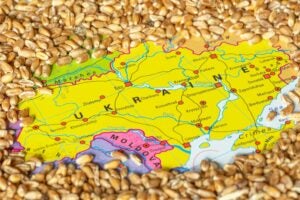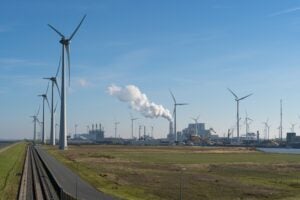Even though the vast majority of supply chains are global, there is a longstanding debate over whether Americans can and should make everything ourselves. At its core, this is a balancing act—between reliability, variety, available labor, and a host of other decisions. Both perspectives have economic benefits and ramifications, and wise trade policy balances the two.
Over the years, the United States has at times pursued targeted policies to promote self-sufficiency and limited trade (also known as autarky in its extreme). For example, the CHIPS Act acknowledges that semiconductors are too important to the American economy to rely predominantly on international suppliers. The act has incentivized billions of investment dollars to build factories and hire Americans. Further, the recent Infrastructure Investment and Jobs Act included a provision which preferences American materials and manufactured products. These bills had clear tradeoffs on cost, security, and promotion of local jobs.
However, there are some goods or materials we simply cannot produce here. Americans love coffee, but the nation’s climate prohibits us from growing enough to satisfy our habit. Devoting all of Hawaii’s land to coffee cultivation wouldn’t come close.
Further, trade gives the US economy flexibility—in what we consume, produce, and prioritize in the sectors and skills at which we are comparatively skilled. Our workforce has exceptionally skilled scientists, engineers, and managers, which allows many Americans to focus on those jobs while other countries focus on different parts of the production process. The value chain demonstrates how these indirectly related fields contribute to trade-supported jobs, as they provide some of the value that makes trade efficient enough to employ longshoremen, truck drivers, and factory workers.
Policymakers must also recognize how trade can sometimes lead to job loss for domestic workers. Programs like Trade Adjustment Assistance are key aspects of trade policy that support the entire US workforce, and even more can be done to help workers with job and skill training before economic change happens.
|
On 15 September, the European Commission allowed a temporary ban on Ukrainian grain imports (maize, wheat, rapeseed and sunflower seed) to expire. The ban had been introduced on 2 May 2023 under pressure from five EU countries bordering Ukraine (Bulgaria, Hungary, Poland, Romania and Slovakia), which feared their own producers would be harmed. Initially set for one month until 5 June, the ban was subsequently extended.
It is unclear what impact the end of the ban will have as Hungary, Poland and Slovakia have also introduced unilateral bans. Nevertheless, ending the EU-level import restrictions (which applied only in the five countries) was the right decision for several reasons.
First, Ukraine, which has been fighting Russian aggression for more than a year and a half, deserves exceptional support from the EU, also in the economic and trade spheres. Grain is one of Ukraine’s most critical exports. Russia has largely blocked the maritime export route since it withdrew, on 17 July 2023, from the United Nations sponsored Black Sea Grain Initiative (BSGI). Thus, facilitating exports to the EU, and via the EU to third countries, provides a respite for Ukrainian agriculture producers and the country’s balance of payments.
Second, the temporary ban introduced in May was problematic from the point of view of the integrity of the European single market and the EU’s common trade policy. In the long run, it was ineffective because grain imports from Ukraine could enter the ‘bordering’ countries via other member states within the EU customs union and common market.
Third, it was good that the Commission did not give in to the aggressive pressure from some EU countries, which demanded an extension of the ban until the end of 2023. The Commission’s decisions should be determined by the EU Treaties and EU strategic interests in the long run, rather than attempts to please various lobbies in individual countries and to meet their short-term political needs.
Fourth, advocates of the extension used disputable economic arguments. In particular, there is little evidence in the available statistics for the supposed massive influx of Ukrainian grain to the EU. Volumes of the two main grain import items (wheat and maize) were declining from their peaks in Q4 2022 and Q1 2023 already before the introduction of the temporary ban.
|
|
|
|
The very real threat posed by climate change is no longer in doubt. Research suggests that even a 1C increase in average temperature across the globe will have large projected economic impacts – concentrated in areas of the world where most of the global population lives. Other estimates show that, over the past 20 years, the Vulnerable Twenty (V20) Group of Finance Ministers of the Climate Vulnerable Forum, a dedicated coalition of 68 member countries that are systemically vulnerable to climate change, have lost out on 20 percent of their growth potential as a result of the negative physical impacts of climate change.
In response, national governments are taking large-scale action to combat climate change through emissions reductions and efforts to shift to a low-carbon economy. New initiatives at the International Monetary Fund (IMF) and the World Bank are underway to incorporate climate considerations in their financing arrangements. There is increasing pressure among World Trade Organization (WTO) members to reform the trade regime to align with climate commitments, and the European Union (EU) and the Organisation for Economic Cooperation and Development (OECD) are undergoing similar efforts to align their investment treaty commitments with global climate goals.
Nevertheless, existing policy and financing action at the national and international level is far from sufficient to limit global warming. Experts agree that substantial investment and subsequent economic growth for most of the world will be needed to meet climate goals, as well as the UN 2030 Sustainable Development Goals, with predictions pointing to at least $1 trillion per year needed in domestic financing from emerging markets and developing countries (EMDEs) by 2025. Moreover, domestic financing alone is still not sufficient, as researchers have estimated an additional $1 trillion per year needed in external finance by 2030 – from developed country pledges, development banks and private lenders and investors.
The current calculations around climate finance demonstrate a pathway forward, a necessary (though not sufficient) condition for a successful global response to climate change. Where countries can mobilize the necessary amount of financing ($1 trillion per year), and it is accompanied by additional necessary policy shifts toward a low-carbon future, the possibility arises that countries could “decouple” their economic growth from increased emissions. In other words, countries may be able to shift the composition of their planned policies and investment for economic growth such that they meet the dual purpose of development and accomplishing a clean energy transition.
|
|
|
As America steadily builds momentum to become an electric vehicle (EV) powerhouse in the next decade, outdated and rigorous supply chain constraints will see the country falling further behind China and the European Union by 2025, according to a report by the Coalition for a Prosperous America (CPA).
Countless supply chain issues are further dampening legacy car makers and the Biden Administration’s efforts to make 50% of all cars on American roads fully electric by 2030.
Last year marked a 65% jump or two-thirds increase in new EV passenger vehicles sold compared to 2021. Overall, electric cars accounted for 5.8% of all new cars sold across the country in 2022, a steady build-up from 3.1% the year before.
Considering how much the EV market has expanded, determining where it could lead in the coming years is a question of how industry leaders can resolve internal and widespread issues with native innovation and technology.
OVERCOMING THE LACK OF ACCESS TO ADEQUATE MATERIALS
At present, four key materials make up the majority of materials needed to compile lithium-ion batteries — lithium, nickel, cobalt, and copper. Overall these four ingredients make up roughly 50% of a battery’s cost.
These raw materials or raw earth make up several crucial components of electric car operations, including cathode chemistries across several levels, windings, and rotors in motors.
For successful rollout, essential materials would need to be more widely available, in higher volumes and at lower prices if automakers want to meet the industry’s and the government’s ambitious EV targets.
Matthew Hart, the spokesperson for the automotive advice site, Axlewise, comments how America’s newfound love and interest for electric vehicles have only further highlighted how far behind we have fallen in the EV race.
“However, as electric cars continue to become more affordable and accessible, new players are entering the market daily. This is creating both challenges and opportunities for existing manufacturers and consumers alike. Overall, it is clear that electric car prices will continue to rise over the next decade as demand continues to increase,” says Matthew.
|
|





